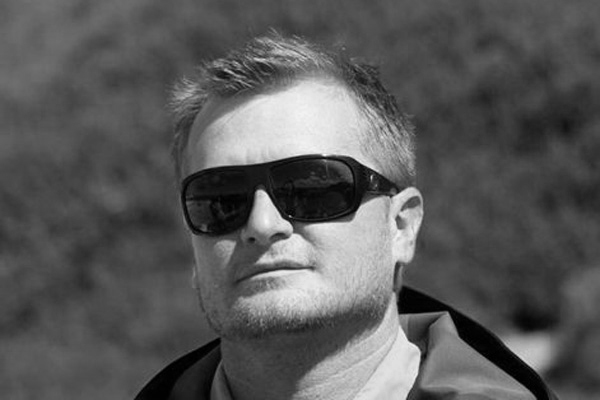
 Harry Wagner
Contributor
Harry Wagner
Contributor
Trail communication is key, whether your spotter is telling you where to put your tires or when you are trying to reach base camp to tell them you are upside-down. That is why we require a Citizens Band radio (CB) on the Ultimate Adventure. Having a CB is but the first step in communicating on the trail though, not the last. The most important and often overlooked aspect of installing a mobile CB is tuning the antenna. While a properly tuned antenna will result in strong radio performance, an untuned antenna can result in poor performance and can even damage your radio from excessive radio frequency heat that is reflected back into the radio instead of transmitted out.
“The most important aspect of installing a CB is tuning the antenna”
This is the issue we were having in one of our trail trucks. We could hear our friends if they were nearby, but they could not hear us transmit worth a darn. So we headed to our local truck stop and got some help from Cecil at Airtime Communications. Cecil not only tuned our antenna to get our CB working properly, but he also gave us a crash course on the theory and application of CB radios. At truck stops all over the country you can not only buy CB radios and antennas, but you can also find guys like Cecil who are experts at the dying art of tuning an antenna.
Tuning is adjusting an antenna so that the radio’s output power is transformed into radio signals as efficiently as possible. To achieve that, it is necessary to lengthen or shorten the CB antenna slightly. The goal of tuning is to match the antenna’s physical length with that of the radio frequency being used to maximize performance and transmission efficiency. How do you know what length you need? That is where a standing wave ratio (SWR) meter comes in. You can buy an SWR meter and a coax jumper cable for as little as $25. It’s a good investment, particularly if you can get your wheeling buddies to chip in and everyone uses the SWR meter to tune up their radios.
 The Cobra 75 WX ST is a great unit, and with all of the controls in the microphone it fits easily into any vehicle. As good as the radio is, it still wasn’t working properly due to a lack of tuning.
The Cobra 75 WX ST is a great unit, and with all of the controls in the microphone it fits easily into any vehicle. As good as the radio is, it still wasn’t working properly due to a lack of tuning.
You still need to know how to use the SWR meter though, and that’s when a guy like Cecil is handy to have around. “The goal of antenna tuning is to achieve as low an SWR reading as possible on Channel 1 and Channel 40, at each end of the spectrum,” he explained. “1.5:1 is great, 2.0:1 is acceptable, and over 3.0:1 is headed for meltdown. Your radio was over 3.0:1 when you came in.”
Firestik fiberglass antennas have an adjustable tuning screw at the tip of the antenna so that you can shorten or lengthen it to adjust the overall length of your antenna. If the reading on Channel 1 is greater than the reading on Channel 40, your antenna is too short and you’ll need to lengthen it. Conversely, if the reading on Channel 40 is greater than Channel 1, you need to shorten your antenna. Make very small adjustments and then recheck the SWR readings on both channels. For a professional like Cecil this only took a few minutes. If you are new at CB tuning, take notes on the changes you are making and how they affect your readings and be patient. Once Cecil had worked his magic, now all of our wheeling buddies have us 10-10 all the way from our 20 to our 99.
Up to Code
Need some new lingo to throw around on the trail? Want to impress your trucker friends? Don’t worry, 4WOR has your 10-39.
10-1 Receiving poorly
10-2 Receiving well
10-3 Stop transmitting
10-4 OK, message received
10-5 Relay message
10-6 Busy, stand by
10-7 Out of service, leaving air
10-9 Repeat message
10-10 Transmission completed, standing by
10-11 Talking too rapidly
10-13 Advise weather and road conditions
10-17 Urgent business
10-20 My location is ____, or what’s your location?
10-23 Stand by
10-26 Disregard last information/cancel last message
10-28 Identify your station
10-30 Does not conform to FCC rules
10-32 I will give you a radio check
10-36 Need correct time
10-37 Wrecker needed at ____
10-38 Ambulance needed at ____
10-39 Your message delivered
10-41 Please tune to channel ____
10-42 Traffic accident at ____
10-43 Traffic tied up at ____
10-44 I have a message for you
10-50 Break channel
10-60 What is next message number?
10-62 Unable to copy, use phone
10-65 Awaiting your next message or assignment
10-71 Proceed with transmission in sequence
10-77 Negative contact
10-91 Talk closer to the mic
10-94 Please give me a long count
10-99 Mission completed, all units secure
10-100 Need to go to bathroom
Special Thanks To:
Airtime Communications
775.359.4841







